
The 1892 appointment of Wisconsin lawyer Kate Hamilton Pier as the first female judicial officer in the United States would seem a harbinger of 19th- and 20th-century women steadily taking the bench. However, after Pier’s appointment it would be 44 years before a Wisconsin woman became a judge via a gubernatorial appointment1 and 78 years before the first woman was elected as a judge by Wisconsin voters.2 Indeed, not until after the civil rights era of the 1950s-1970s did an increased number of women serve as judges in Wisconsin.
This article presents a sketch of the Wisconsin state judiciary to reveal the very gradual inclusion of women on the bench and the recent increase in the number of women as state judges, public servants, and elected officials.3
Clearing the Structural Hurdles to the Judiciary
Before Badger State women could reach the bench, the prerequisites for being a judge needed reform. Through ardent advocacy, resilience, and persistence over several decades, women cleared the initial, pernicious hurdles: denials of bar admission, law school admission, and courtroom admission and bans created by married-women and election-eligibility laws.
Bar and Law School Admission Hurdles
The Wisconsin Supreme Court’s denial in 1875 of Lavinia Goodell’s petition for bar admission4 focused on the male pronoun language of the bar admission statute. From that language, the court launched various propositions about women being corrupted by the rough and tumble practice of law. The court opined that women’s constitutions were better suited for the domestic sphere than the professional sphere. A male ally of Goodell’s, who had been elected Speaker of the Assembly, proposed amendments to the bar admission statute. Through wordsmithing, he undercut the court’s “plain-meaning” rationale for denying Goodell’s petition. Two years later, in 1877, the governor signed legislation that allowed women to clear statutory bar admission hurdles.
Admission of women to Wisconsin law schools began in 1885. The Wisconsin State University law school admitted Belle Case La Follette 17 years after its establishment in 1868. Marquette University College of Law admitted Katherine Williams 15 years after its establishment in 1892 and admitted Ida E. Lucik to its night law school program 23 years after its establishment.
Kate Hamilton Pier: The Pioneer
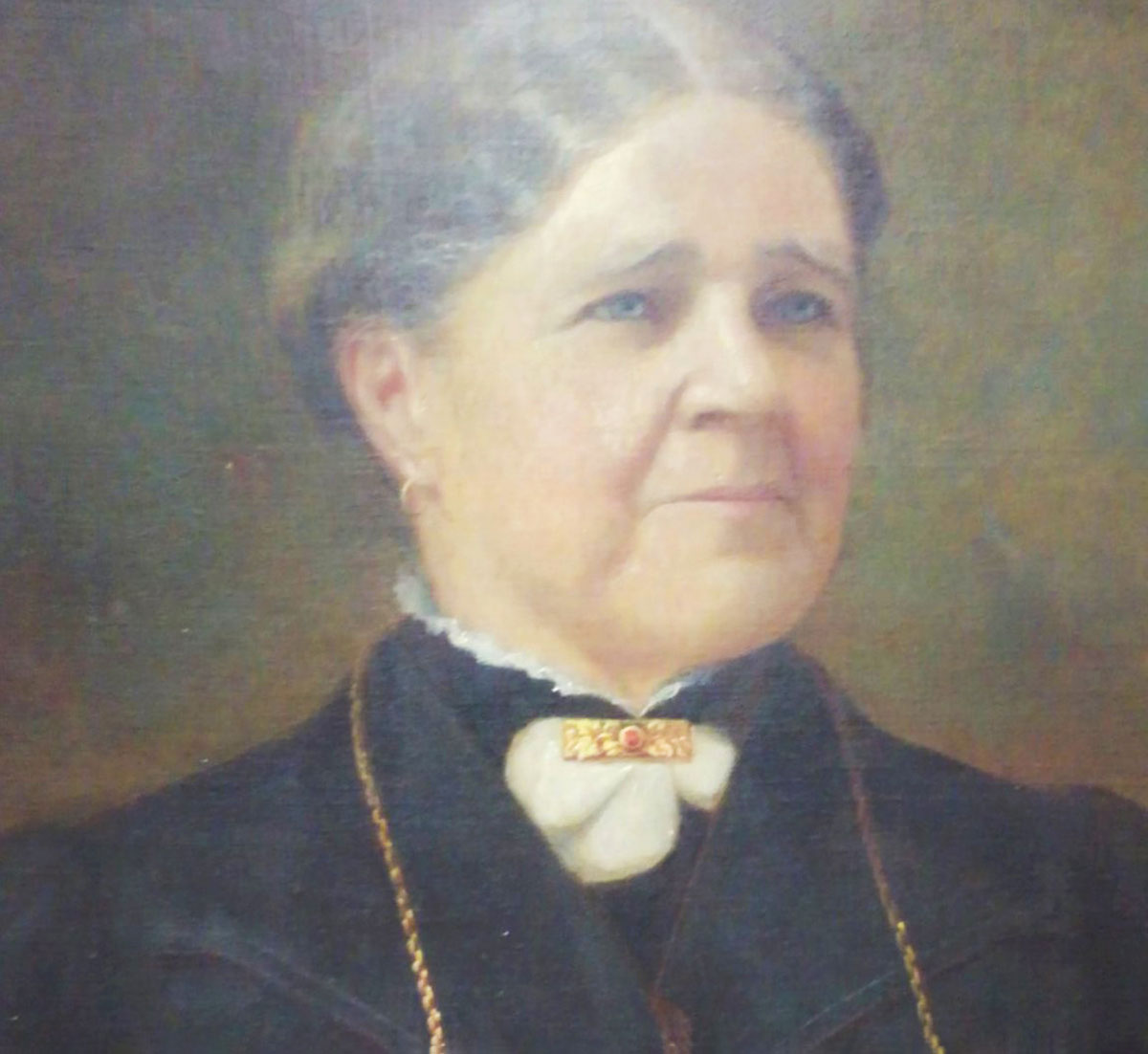
The circumstances of Mrs. Kate Hamilton Pier’s legal career originated in what might be characterized today as a “helicopter parent” – but in the late 1800s would be characterized as a necessary maternal chaperone. Mrs. Pier’s oldest daughter, also named Kate Hamilton Pier (McIntosh), matriculated in 1886 into the law school at what was then called Wisconsin State University in Madison. Mrs. Pier planned to merely accompany her 16-year-old, single daughter to Madison from the family’s residence in Fond du Lac for the two years of study. However, the 40-year-old real estate broker decided to enroll in the law school – after realizing that legal studies would benefit her management of the family business. In 1891, the mother-daughter law school graduates would become the eighth and ninth women admitted to the Wisconsin bar.
Mrs. Pier’s two other daughters, Harriet Pier (Simonds) and Caroline Pier (Roemer), also became Wisconsin lawyers. The four women eventually practiced at their all-female Milwaukee law firm, leading successful and accomplished careers. Indeed, in 1891 the family constituted half the women lawyers in Wisconsin. All four were among the first 20 women admitted to the U.S. Supreme Court bar.
Besides practicing law, the Piers also successfully advocated for legislative changes that expanded opportunities for women. One such accomplishment was to secure statutory amendments that removed bans prohibiting women attorneys from appointment as court commissioners.
With that obstacle cleared, Mrs. Pier was appointed a Milwaukee County Circuit Court Commissioner on Sept. 20, 1892. She became the first and only woman holding that position in the United States at the time – and, coincidentally, became the first woman to hold a judicial office in Wisconsin.
Courtroom Access and Attitudinal Hurdles
Wisconsin’s equal rights bill (the nation’s first),5 enacted in 1921, included provisions that made it possible for women to file for elected office6 and to serve on juries. The landmark legislation also expanded opportunities to contract, sue at law, and testify. These advances made legal practice workable, judicial election possible,7 and courtroom access practicable. No longer were women relegated to the “ladies’ balcony” in courtrooms to view proceedings; they now could undertake integral roles in court proceedings.
Although many of the structural obstacles for women obtaining judicial office were removed, the profession’s attitudinal obstacle remained. The 1875 Goodell decision exemplified such institutional resistance. Chief Justice Edward G. Ryan wrote the unanimous opinion of the three-justice panel:
“The profession of law is surely not [an employment fit for the female character]. The peculiar qualities of womanhood, its gentle graces, its quick sensibility, its tender susceptibility, its purity, its delicacy, its emotional impulses, its subordination of hard reason to sympathetic feeling, are surely not qualifications for forensic strife.”8
Although the bar admission statute changed in 1877 to delete the male references, these amendments did not change Justice Ryan’s attitudes. He cast the sole dissenting vote when the court considered Goodell’s 1879 petition for bar admission.9
Early Women on the Bench
Despite greater accessibility, women did not pursue law degrees or legal careers in great numbers for the next five decades. Between Goodell’s admission to the bar and Wisconsin’s 1920 ratification of the 19th Amendment granting women suffrage, 31 women were admitted to the Wisconsin bar; an additional 44 women were admitted during the 1920s and 35 more during the 1930s, for a total of 130 Wisconsin bar admittees by 1940. Among those pioneer women lawyers, only a few would become judges.
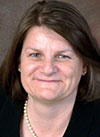 Hannah C. Dugan, U.W. 1987, is a Milwaukee County Circuit Court judge, elected in 2016. For assistance with this article, she thanks attorney Mary E. Burke, attorney Kathy Nusslock at Davis & Kuelthau, and Tom Sheehan at the Office of the Director of State Courts. Get to know the author: Check out Q&A below.
Hannah C. Dugan, U.W. 1987, is a Milwaukee County Circuit Court judge, elected in 2016. For assistance with this article, she thanks attorney Mary E. Burke, attorney Kathy Nusslock at Davis & Kuelthau, and Tom Sheehan at the Office of the Director of State Courts. Get to know the author: Check out Q&A below.
Attorney Verle Sells was the first woman appointed to a Wisconsin circuit court judgeship. After an extensive teaching career, Sells attended Marquette University Law School. She graduated with high honors at age 47 on Feb. 7, 1936, and was admitted to the bar on Feb. 14. On March 5, only 20 days later, Governor Philip F. La Follette (son of Belle Case La Follette) appointed Sells to the Florence County Circuit Court. She immediately stood election for the seat, and one month later she was elected (unopposed) to a six-year term. She died in 1940, still on the bench. While serving as judge, Judge Sells also practiced law with her brother; operated an abstract company; and served on the local bank board, the Florence School Board, and a gubernatorial select committee on social welfare – most of which the current judicial code of conduct would prohibit.
The first woman to be elected judge without prior appointment was attorney Olga Bennett, who had graduated from the U.W. Law School in 1935. She became a county judge in Vernon County in 1969, besting an appointed incumbent. The discontented incumbent and his supporters mounted an immediate and unsuccessful “ouster action.” The statutory process to reverse an election involved a “probable cause” hearing before the state attorney general, Robert Warren, who later became a federal district court judge. He determined no probable cause existed to reverse the election results and found in Judge Bennett’s favor. She served for four years but lost reelection when challenged by the same disgruntled candidate from 1969. Bennett returned to practice for the next 16 years. When she died in 1985, she had been an attorney for 50 years.
The first African-American judge and first woman judge in Milwaukee County was attorney Vel Phillips. In 1971, she resigned from the Milwaukee Common Council when Governor Lee Dreyfus appointed her to the county judgeship in Children’s Court. In 2009, the Wauwatosa building in which she served as a judge was named in her honor as the Vel R. Phillips Youth & Family Justice Center. Phillips and her husband, Dale, have the added distinction of being the first married couple to be admitted to the Wisconsin bar; both graduated from the U.W. Law School in 1951.
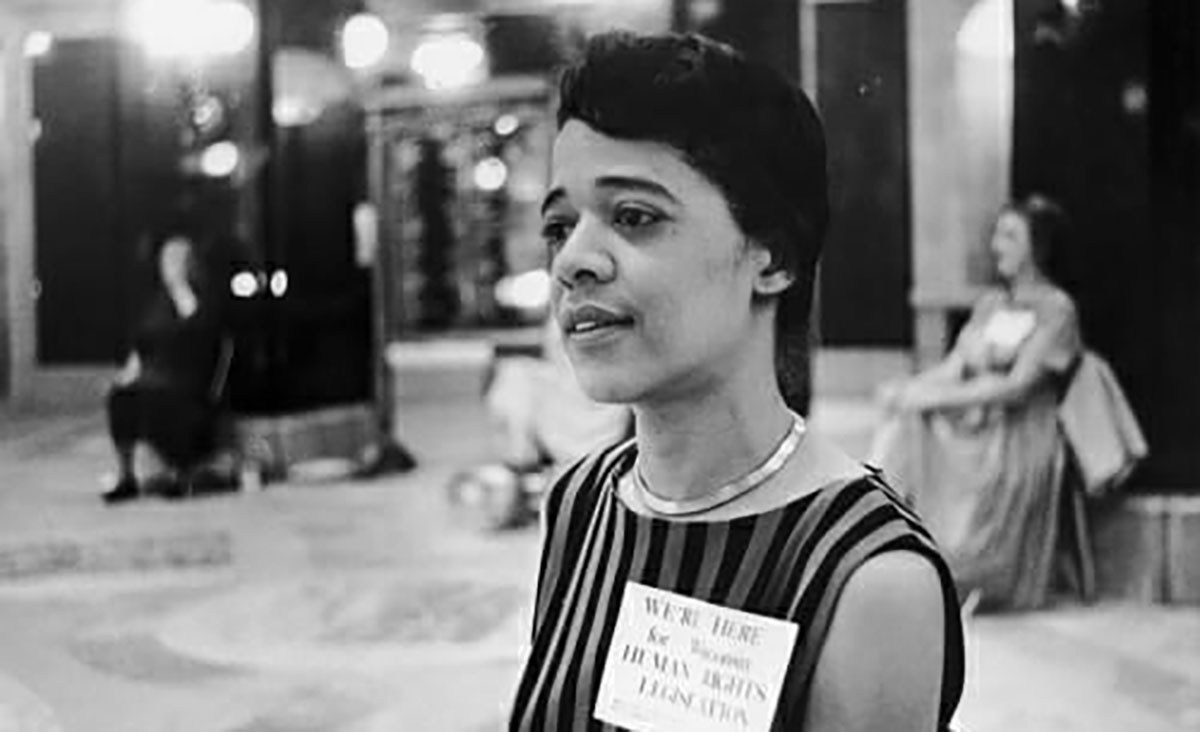
Vel Phillips was a trailblazer in law and politics in Wisconsin, breaking many barriers for women and African-Americans.
She was the first Black woman to graduate from the U.W. Law School.
The Restructured Wisconsin Court System and the Upsurge of Women Bound for the Judiciary
Between the 1940s and the 1960s in the United States, women remained a small percentage of law students and even smaller percentage of bar admittees – no greater than 3 percent. Prospects for women lawyers’ employment generally were grim and even grimmer for positions at law firms, on law school faculty, and in the judiciary.
The tide turned during the 1970s. Newly passed civil rights laws and the enforcement of Title VII prohibitions of gender-based discrimination led more women to pursue higher education and, in turn, to consider law school and legal careers. The number of women’s applications to law schools gradually rose, and so did admissions.10
Also during the 1970s, Wisconsin undertook a massive restructuring of its court system.11 Most notably, the jurisdiction of the county courts was transferred to the circuit courts and the intermediate Wisconsin Court of Appeals was created. The Wisconsin Legislature was charged with implementing the constitutional changes.
The overhaul included numerous changes, but two in particular would affect women seeking to become judges: 1) a lawyer had to be admitted to practice law in Wisconsin for five years to be eligible for judicial office, and 2) the mandatory retirement age of judges no longer existed under the constitution. The effect of the first change was that individuals would not be eligible to hold office any sooner than eight years after they began law school, leaving only a small percentage of women able to hold the new judgeships. The effect of the second change was that fewer retirements meant fewer opportunities for women to run for vacated seats. Additionally, collapsing the county courts into one circuit court eliminated scores of judgeships statewide.12
The Wisconsin Supreme Court after 1978
In 1976, two years before the court system restructuring, Governor Patrick Lucey appointed attorney Shirley S. Abrahamson to the Wisconsin Supreme Court as Wisconsin’s first female justice. Upon fulfilling 43 years of public service in 2019, she made the history books – not only as Wisconsin’s longest-serving justice but also as its longest-serving chief justice.
Chief Justice Abrahamson served as the only women justice for 17 years until Governor Tommy Thompson appointed attorney Janine Geske (1993-98). They were followed by attorney Ann Walsh Bradley, the first women justice elected to the Supreme Court without first being appointed (1995-present).
During Chief Justice Abrahamson’s tenure, she served with 25 other justices, including seven women: Justice Geske, Justice Ann Walsh Bradley, Justice Diane Sykes (appointed, 1999-2004), Justice Patience Drake Roggensack (elected, 2004-present; Chief Justice 2015-21), Justice Annette Ziegler (elected, 2007-present; Chief Justice 2021- present), Justice Rebecca Grassl Bradley (appointed, 2015-present), and Justice Rebecca Frank Dallet (elected, 2018-present). Justice Jill Karofsky (elected, 2020-present) is the most recent justice and the ninth woman to serve on the high court.
Five of the nine women justices (55 percent) were elected to the bench.13 All of the women, except Abrahamson, were judges immediately before they ascended to the high court (88 percent). The gap of almost two decades between Chief Justice Abrahamson’s and Justice Geske’s high court appointments reflects the slowly rising trajectory of women serving in the Wisconsin judiciary. Since 2020, the Wisconsin Supreme Court has had one male justice, Brian Hagedorn (elected, 2019-present), and six female justices – the highest percentage of women justices on any state high court in the nation (86 percent).14
Court of Appeals Since 1978
The 1978 creation of the Wisconsin Court of Appeals provided judicial promise for women that was not realized until the 21st century. During the last 43 years, 60 judges have sat on the court of appeals – 45 men (75 percent) and 15 women (25 percent). Of the 15 women, seven were appointed and eight were elected. In contrast to the Wisconsin Supreme Court, only five of the 15 women were trial judges immediately before they ascended to the intermediate court. Two of these women (13 percent) ascended to the Wisconsin Supreme Court (Justice Patience Roggensack, by election, and Justice Rebecca Grassl Bradley, by appointment).
Only one of the initial court of appeals seats available in 1978 was filled by a woman – Martha Bablitch (1978-85). It would be 16 years before another woman would serve on the court of appeals, when Margaret J. Vergeront was elected (1994-2012). The 1996 elections brought Patricia Curley (1996-2016) and Patience Drake Roggensack (1996-2004) to the office. The four women were the only ones seated on the court of appeals in the 20th century.
In the 2000s, four women were seated on the intermediate court: Joan Kessler (2004-20) was elected, and Kitty Brennan (2008-19), Burnie Bridge (2007-10), and Lisa Neubauer (2007-present) were appointed.
During the 2010s, the number of women on the court of appeals bench increased. Two women were elected – Jennifer Nashold (2019-present) and Joanne Kloppenburg (2012-present); and three women were appointed – Rachel Graham (2019-present), Rebecca Grassl Bradley (2015), and Lisa Stark (2013-present). In the 2020s, the court of appeals welcomed two additional women: one appointed, Maxine White (2020-present; also, the first woman of color), and one elected, Shelly Grogan (2021-present). Currently, women hold seven of the 16 court of appeals seats (near parity).
The Wisconsin Circuit Courts since 1978
Only in the most recent several years have women held a significant percentage and number of judicial seats in Wisconsin. Compared to other states, Wisconsin has lagged in achieving notable levels of gender equity or inclusion. Although law school and bar admissions within the state fluctuate, substantial levels of gender parity have been reached during the last two decades. The same cannot be said of judicial seats.
Several circuit court seats were held by women beginning in the 1970s, for example, in Dane County by Moira Krueger (elected 1977 in a nationally reported recall election) and Angela B. Bartell (appointed, 1978-2008); in Dunn County by Donna J. Muza (appointed, 1978-96); and in Milwaukee County by Patricia Curley (appointed, 1978-96) and Leah Lampone (appointed, 1978-94). They filled seats created by the court system restructuring.
Women were appointed or elected to a smattering of judicial seats in the 1980s (11 seats); the next decade, the numbers surged (21 seats). An additional 18 women began judicial service in the 2000s. Notably, women judges were concentrated in the circuit courts with more than 10 branches.
In the 2010s, the circuit courts were affected by a significant number of retirements, many election challenges to incumbents and gubernatorial appointments, and substantial changes in racial and gender demographics of Wisconsin lawyers. With these power shifts came a surge of women assuming circuit court benches. During the decade, 51 women were either appointed or elected, with more than half of the 51 women pursuing office via election.15
A number of the state’s women trial judges also are persons of color. For example, since 1971 Milwaukee County has sworn in 152 judges – 42 (28 percent) of whom have been women, and 10 of whom have been women of color (7 percent of all 152 judges, 24 percent of all 42 women judges).
Although Wisconsin historically has lagged in judicial gender diversity, the trajectory has accelerated during the last five years. In 2010, only 15.6 percent of Wisconsin judges were women, compared to 29.6 percent in Minnesota, 27.3 percent in Illinois, 25.7 percent in Michigan, and 23.5 percent in Iowa. According to a 2020 Wisconsin Women’s Council report, the percentage of women judges serving in Wisconsin circuit courts increased to 17 percent in 2015 and leaped to 29 percent in 2020 (73 of 249 seats). In one decade, the percentage of female circuit court judges essentially doubled.
The 2020 report identifies that about half of those sitting women judges (35 of 73) are in only four circuit courts,16 48 percent of all circuit courts (33 of 69) currently only having male judges,17 while only eight circuit courts currently only have women judges (all in one-judge circuit courts). An important diversity goal is that all of Wisconsin’s judicial districts include an equitable number of women judges.
Based on current court demographics, the 2020s already portend a continuing upward trajectory. Since 2020 and to date in 2021, the number of all circuit court judgeships in Wisconsin held by women increased from 29 percent to 31 percent.
During 2021, six women were elected to circuit courts and to date five women have been appointed to vacated circuit court seats. Of these 11 circuit court branches, eight (72 percent) are in rural counties. Two appointees are the first women to hold judicial office in their counties (Portage County and Fond du Lac County). Of the 11 judges, eight (72 percent) succeeded male judges18 and three (28 percent) succeeded female judges.19 Three of the new judges in 2021 (27 percent) are also women of color.20
Why Women Judges Matter
Why does it matter that women serve as judges? According to the Gavel Gap (a 2015 national report on race and gender diversity on the bench),21 an inclusive judiciary matters for the following reasons:
“Judges’ backgrounds have important implications for the work of courts. The characteristics of those who sit in judgment can affect the internal workings of courts as well as the external perception of courts and judges. The background of judges can influence how they make decisions and impact the public’s acceptance of those decisions.”
Chief Justice Ryan recoiled at Goodell’s statutory construction argument in support of admission to the bar. He wrote that:
“The same peremptory rule of construction would reach all or nearly all the functions of the state government, would obliterate almost all distinction of sex in our statutory corpus juris, and make females eligible to almost all offices under our statutes, municipal and state, executive, legislative and judicial….”22
Chief Justice Ryan foresaw and feared that “[s]uch a rule would be one of judicial revolution…” While not as dramatic as a revolution, Lavinia Goodell, Belle Case La Follette, Kate Hamilton Pier, Olga Bennett, Verle Sells, Shirley Abrahamson, and Vel Phillips did set Wisconsin women on a march toward judicial transformation. Their aspirations of inclusion and parity in the courtroom are not yet met decades later. However, they, and the Wisconsin women lawyers who succeeded them, provide the inspiration to persistently ask this question: Have you ever considered running for judge?
Shirley S. Abrahamson: A Preeminent Public Servant
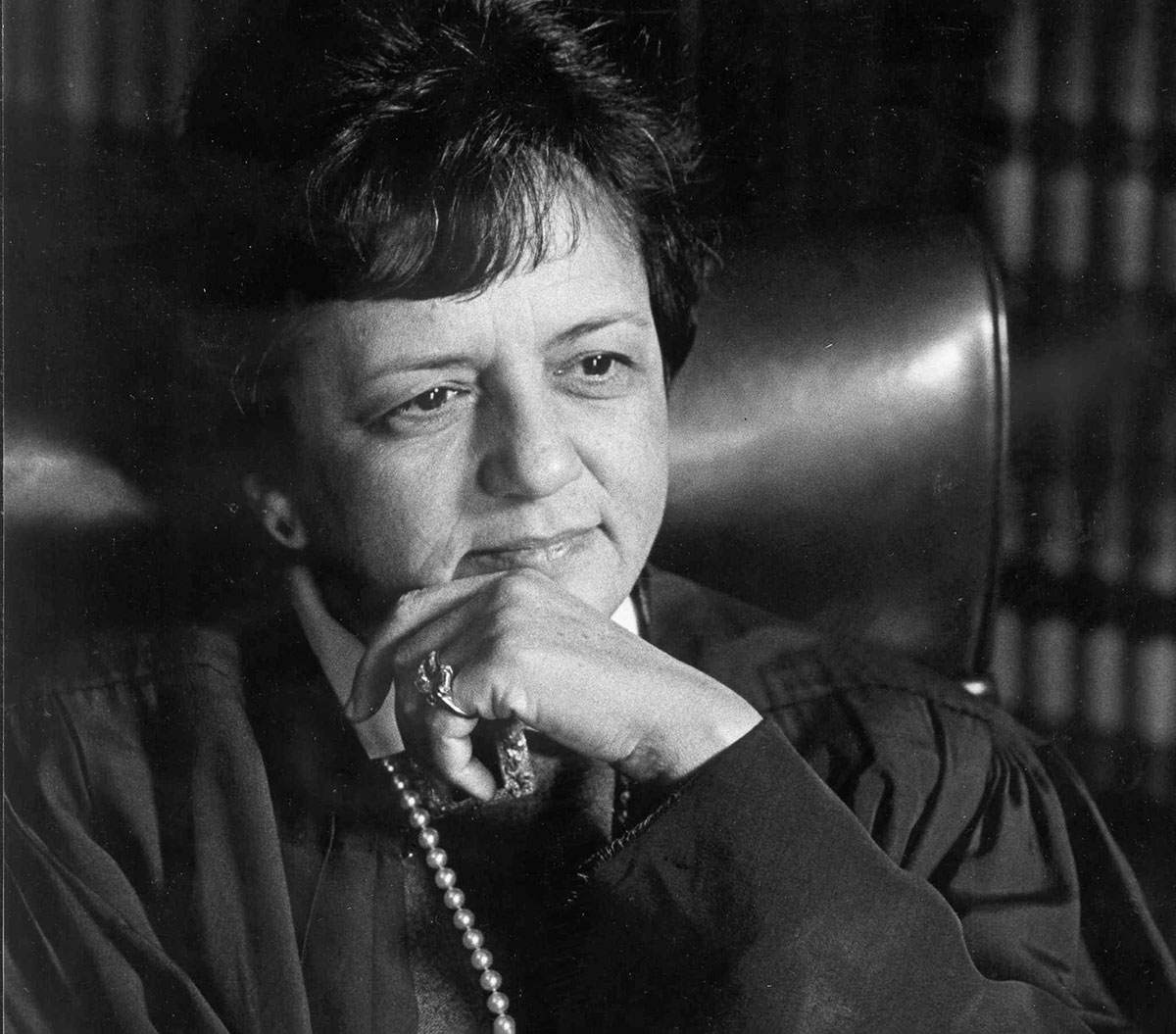
Justice Abrahamson in chambers. She became the first woman on the Wisconsin Supreme
Court, appointed by Gov. Patrick Lucey in 1976 before her first election in 1979.
Shirley S. Abrahamson began her 43 years of public service when she was appointed to the Wisconsin Supreme Court in 1976. Governor Patrick Lucey’s appointment of Abrahamson, the first woman to serve on Wisconsin’s highest court, was a historic milestone. The appointment was not without controversy. Some vocal commentators were concerned that the presence of a woman on the court would affect the otherwise all-male court’s deliberations, collegiality, and opinions.
However, as her more than four decades of judicial service would reveal, Chief Justice Abrahamson’s influence on the direction of the court had little to do with gender. Her influence took parallel paths: 1) scholarly perspective on jurisprudence, and 2) court-system administration that led or presaged evolving legal practice and court operations.
Chief Justice Abrahamson was well known for her prodigious work ethic, her insightful opinions, and her unfailing commitment to open government serving the people’s interest. She became an authoritative voice statewide, nationally, and internationally on the fundamental necessity of an independent judiciary and the value of a nonpartisan, elected judiciary. As a hard-working public servant during the late 20th century and the early 21st century, Chief Justice Abrahamson became a mentor and role model for the growing numbers of women entering law school, practicing law, and running for and holding elected office.
Breaking glass ceilings and longevity have their place. But it was the content of those 43 years on the bench that matters: Chief Justice Abrahamson’s leadership, scholarship, mentorship, and friendship for the people of Wisconsin constitute her true legacy. The summary of that legacy is found in the words of U.S. Court of Appeals Judge Diane Sykes, spoken upon Chief Justice Abrahamson’s retirement in 2019:
“Justice Abrahamson is a brilliant legal thinker, a powerful writer, and trailblazer in the law, … She’s been a champion of equal justice, individual rights, and an independent judiciary. We have different views on legal interpretation and the role of the courts, but her work always made mine better. She has made an outsized and lasting mark on our state law.”
Shirley S. Abrahamson by the Numbers
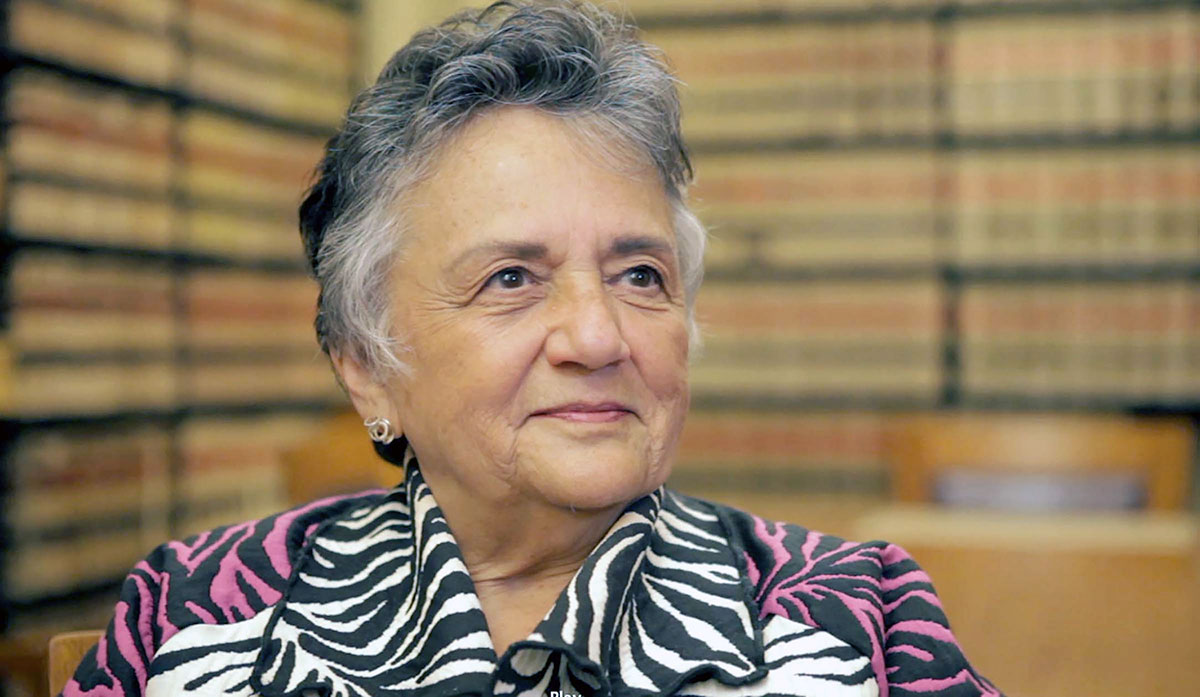
When she retired in July 2019, Justice Shirley Abrahamson had served 43 years on
the Wisconsin Supreme Court. Photo: Chief Justice Abrahamson, August 2011.
Mike De Sisti / Milwaukee Journal Sentinel.
43 years: Longest serving Wisconsin Supreme Court Justice; she served more than one-quarter of the number of years the Wisconsin Supreme Court had even existed. Longest serving statewide elected official. Longest serving woman in any state elected office.
19 years: Longest serving Wisconsin Supreme Court Chief Justice.
1000s of attorney oaths administered to new Wisconsin lawyers.
100s of judicial oaths administered throughout Wisconsin.
3,500 written decisions in which she participated.
530-plus majority written opinions authored.
490-plus written dissents authored.
325-plus written concurring opinions authored.
40-plus law review articles authored.
150-plus cutting-edge court administration initiatives created or shepherded to keep the court current, agile, accessible, and independent.
14 honorary Doctorates of Law – added to her actual Doctor of Juridical Science, U.W. 1962.
4 10-year terms in office; elected more times than any other Wisconsin Supreme Court justice.
2 times short listed for appointment to the U.S. Supreme Court.
» Cite this article: 94 Wis. Law. 32-38 (September 2021).
Meet Our Contributors
What is a passion project you are pursuing?
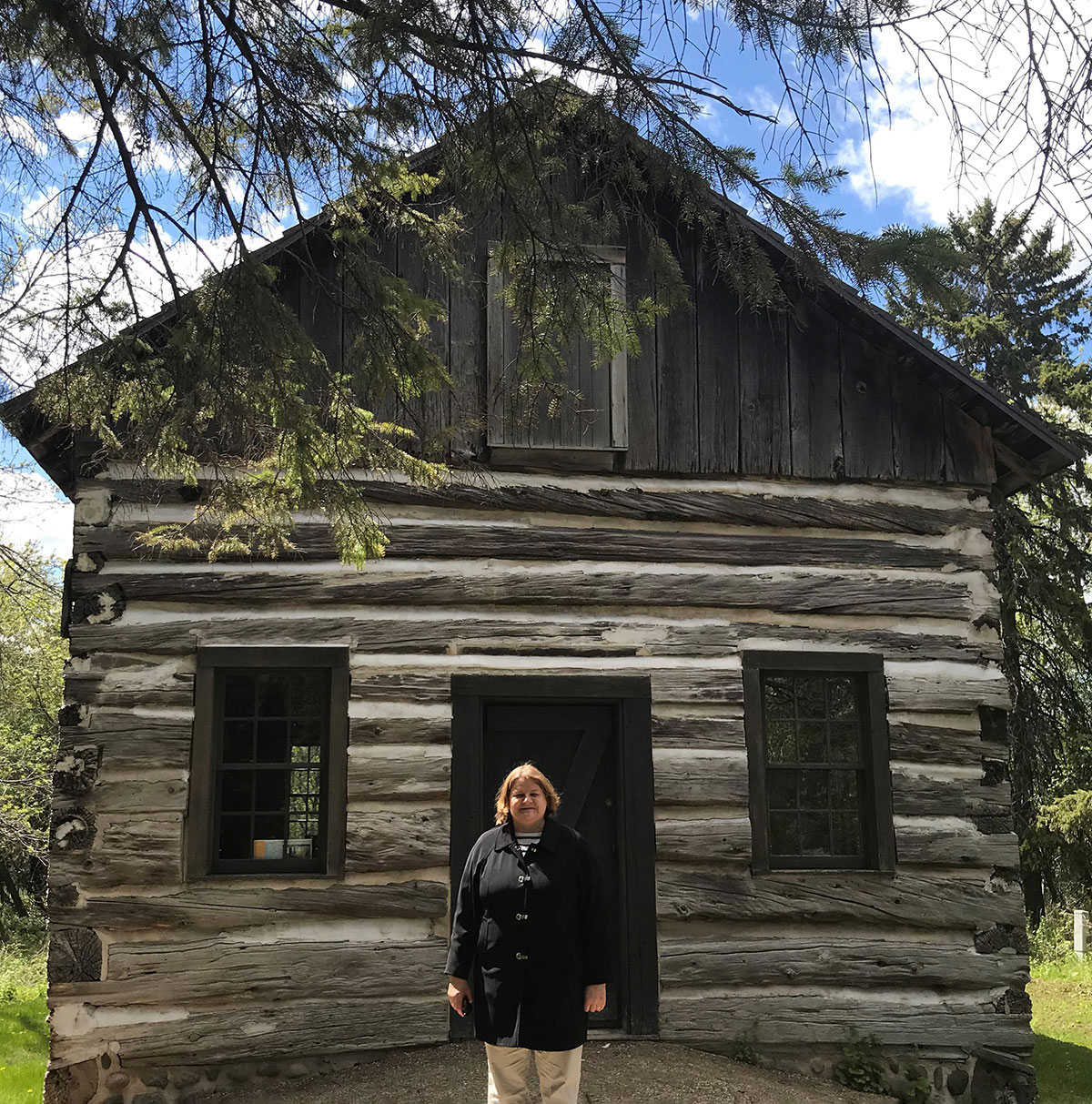 A passion project I started last year is my Wisconsin courthouse picture project. I’ve set out to have my picture taken in front of every county courthouse in Wisconsin. It’s interesting to see the variety of architectural styles, both inside and out. It’s also great to see the pride that counties take in their civic buildings – especially the counties that maintain both original and newer courthouses. In those counties, I get to “shoot” at two locations.
A passion project I started last year is my Wisconsin courthouse picture project. I’ve set out to have my picture taken in front of every county courthouse in Wisconsin. It’s interesting to see the variety of architectural styles, both inside and out. It’s also great to see the pride that counties take in their civic buildings – especially the counties that maintain both original and newer courthouses. In those counties, I get to “shoot” at two locations.
COVID-19 restrictions curbed the project’s travel schedule and access to the courthouses themselves. However, this summer I was able to see some beautiful interiors again. In several counties I even, by chance, got to visit briefly with the judges who preside over both the court and the care of their courthouses. My goal is to finish the project before Wisconsin’s 175th birthday in May 2023.
In the accompanying photo, I am at Wisconsin’s first courthouse (1825), located in current Heritage Hill State Park in Green Bay.
Hannah C. Dugan, Milwaukee County Circuit Court
Become a contributor! Are you working on an interesting case? Have a practice tip to share? There are several ways to contribute to Wisconsin Lawyer. To discuss a topic idea, contact Managing Editor Karlé Lester at (800) 444-9404, ext. 6127, or email klester@wisbar.org. Check out our writing and submission guidelines.
Endnotes
1 Verle Sell of Florence County in 1936.
2 Olga Bennett of Vernon County in 1969.
3 Other Wisconsin court systems – tribal courts, municipal courts, and federal courts – also have women judges. Those systems also have strived for gender equity and parity and have had successes. For example, the current chief judges for the Seventh Circuit Court of Appeals and the U.S. District Court for the Eastern District of Wisconsin are women: Diane Sykes (formerly a Wisconsin Supreme Court Justice) and Pamela Pepper (formerly a federal bankruptcy judge for the Eastern District of Wisconsin). This article’s scope, however, is limited to a review of gender equity in the three-tiered state court system.
4 Motion to Admit Miss Lavinia Goodell to the Bar of this Court, 39 Wis. 232 (1875). Goodell had been admitted to the bar in the Rock County Court. However, at the time, the court structure gave different authorities for bar admission based on whether it was a county court, a circuit court, or the supreme court.
5 The legislation stated that “women shall have the same rights and privileges under the law as men in the exercise of suffrage, freedom of contract, choice of residence for voting purposes, jury service, holding office, holding and conveying property, care and custody of children and in all other respects.”
6 From 1869 until 1921, Wisconsin women were able to be candidates only in school board elections. However, even though a woman could be a candidate in 1869, she was denied the opportunity to cast a school board ballot until 1884.
7 The 1920 certification of the 19th Amendment providing suffrage to women permitted women to vote in elections before the Wisconsin statutes permitted women to file as candidates for election. During 1920 and into 1921, women could vote – but only for male candidates.
8 Motion to Admit Miss Lavinia Goodell to the Bar of this Court, 39 Wis. 232 (1875).
9 Application of Miss Goodell, 48 Wis. 693 (1879).
10 In the mid-1970s Harvard Law School admitted a first-year class that consisted of almost 25 percent women. This admission rate was a bellwether, a challenge, and a milestone. It was all the more remarkable because Harvard Law School did not admit its first woman law student until 1950.
11 In April 1977, voters ratified an amendment to article VII, section 2, of the Wisconsin Constitution, that outlined the current structure of the state courts: “The judicial power of this state shall be vested in a unified court system consisting of one Supreme Court, a court of appeals, a circuit court, such trial courts of general uniform statewide jurisdiction as the Legislature may create by law, and a municipal court if authorized by the Legislature under section 14.”
In June 1978, the legislature implemented the constitutional amendments by enacting Chapter 449, Laws of 1977, to provide a court system composed of circuit courts, a court of appeals, and municipal courts with revised authority.
12 Before court reorganization, trial courts were designated as county courts and circuit courts. The number of courts and the workload divided among the courts varied from county to county. In general, county courts heard probate, juvenile, and traffic matters, and circuit courts heard civil and criminal jury trials. The reorganization created a single-level, unified trial court – the circuit court – to preside over all types of cases.
13 Of the 17 men who served with Abrahamson during her tenure, nine were elected, and eight were appointed.
14 The percentages of women justices on the high courts of Oregon and Washington range in the mid-70s. The percentages in other states drop precipitously after these three states’ numbers.
15 Nine of the 51 female circuit court judges taking office during the 2010s were appointed, eight by Governor Scott Walker (2010-2018) and one by Governor Tony Evers (who took office in 2019).
16 Milwaukee, Dane, Waukesha, and Racine Counties
17 Wis. Women’s Council, Women in the Judiciary Circuit Courts, 2020 (Dec. 2020).
18 Elected without a challenger and succeeded a man – Samantha R. Bastil, Sheboygan County. Elected by defeating a male candidate and succeeding a man – Christina M. Mayer, Dunn County. Elected by defeating a female candidate and succeeding a man – Faun Marie Phillipson, Green County,
19 In Kenosha County, Angelina Gabriele defeated Angela Cunningham and replaced Mary K. Wagner, who retired. In Milwaukee County, Katie B. Kegel defeated Susan Roth and replaced Clare L. Fiorenza, who retired.
In a contested election in Walworth County, an incumbent woman judge (appointed in 2020) lost her election to a male opponent. In Brown County, a woman challenged a male incumbent and lost. In Fond du Lac County, a woman was defeated by a male candidate to succeed a male judge who retired.
All four male candidates in new and open legislatively created seats won their elections. Two of the new branches had female contenders (Calumet County, candidate Kimberly Tenerelli; Jackson County, candidate Robyn Matousek).
20 New Judges Elected to Wisconsin Court of Appeals, 11 Circuit Court Branches (April 2021).
21 The Gavel Gap, American Constitution Society (2015).
22 Motion to Admit Miss Lavinia Goodell to the Bar of this Court, 39 Wis. 232 (1875).
